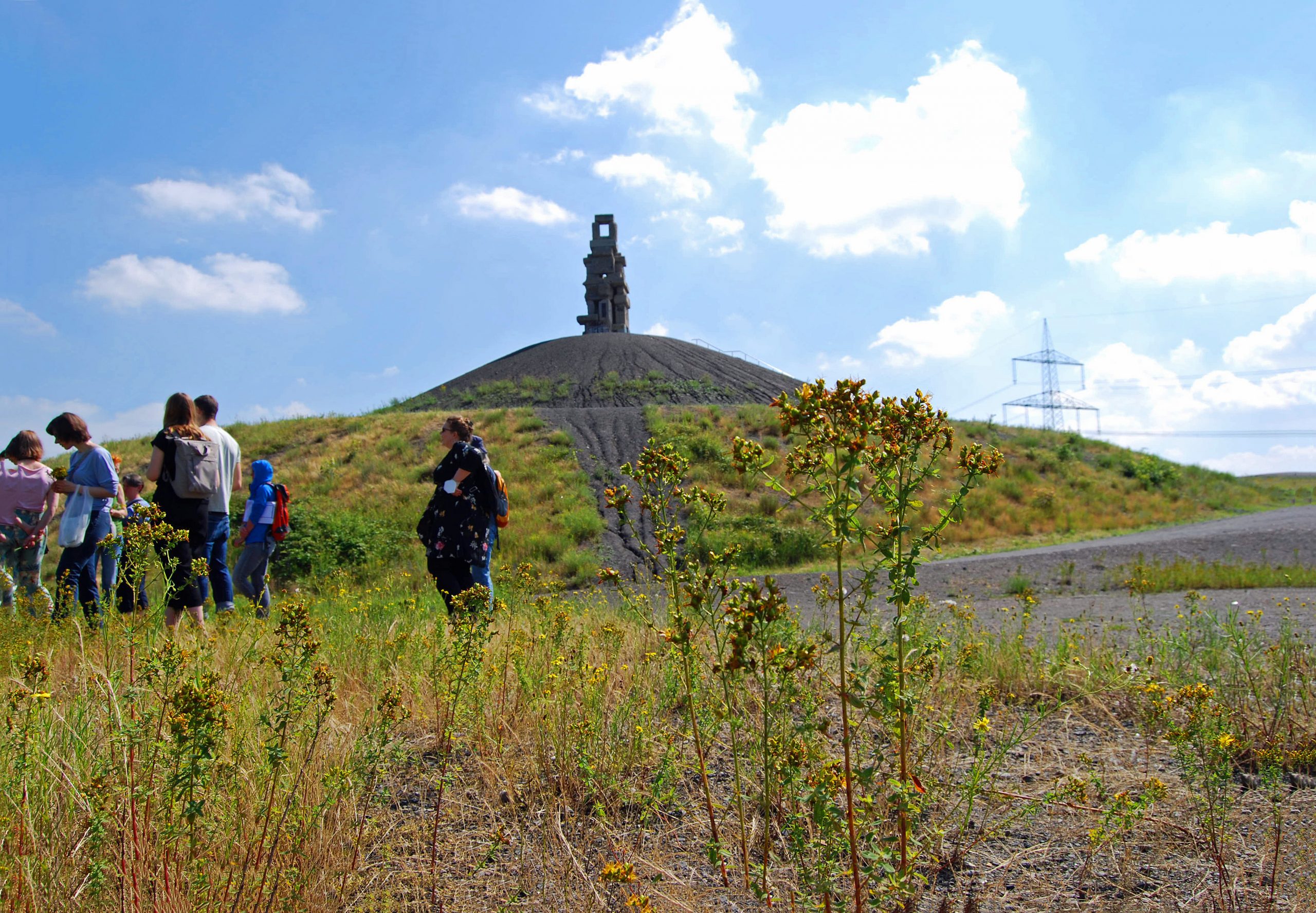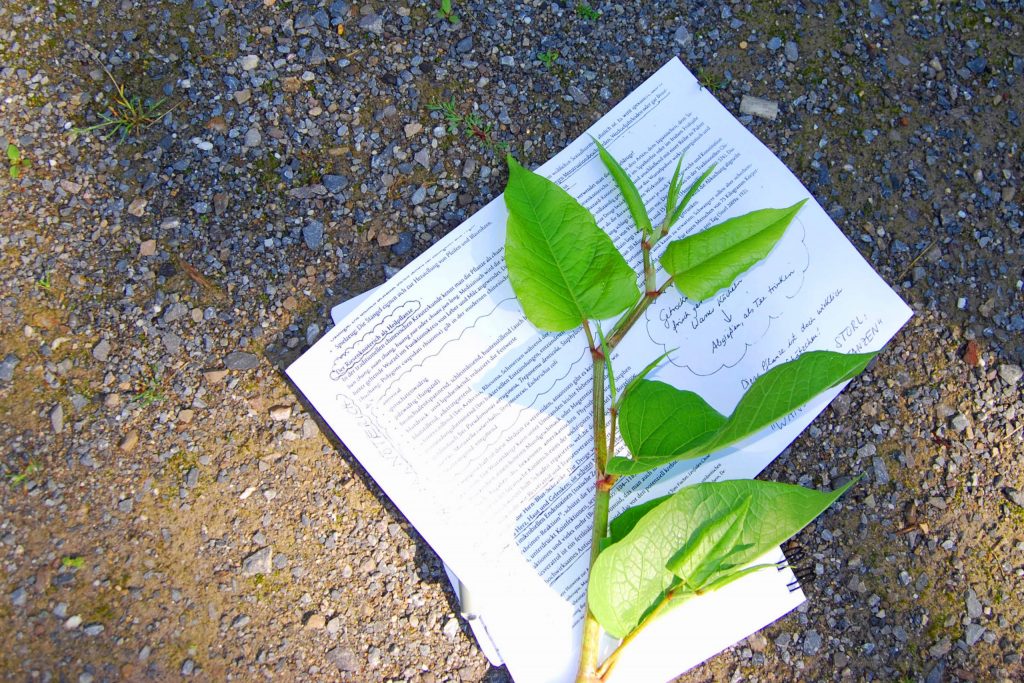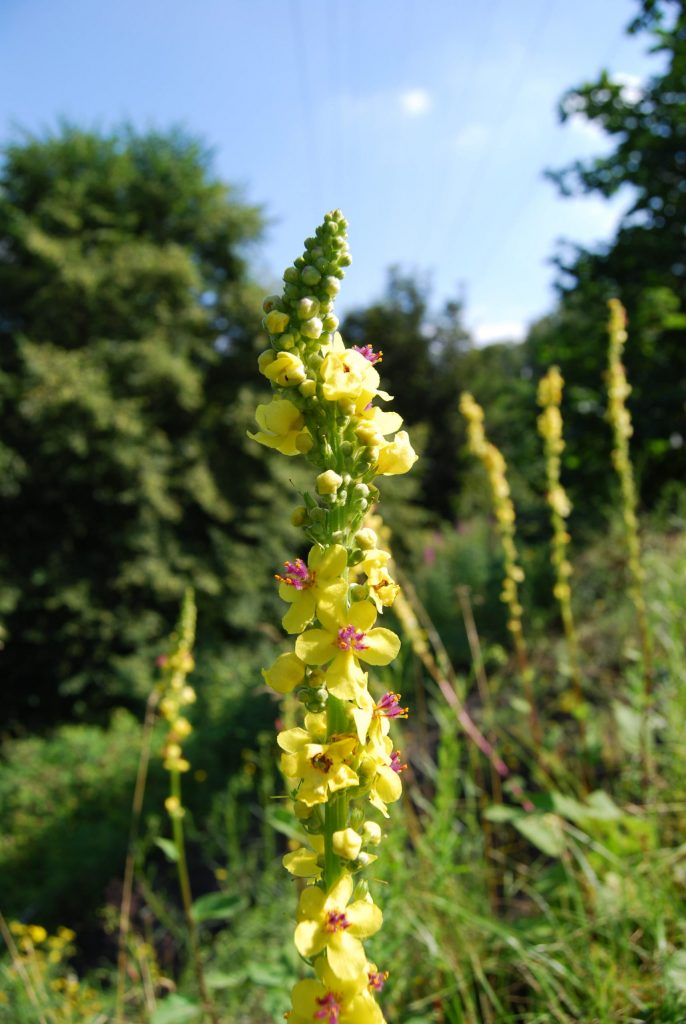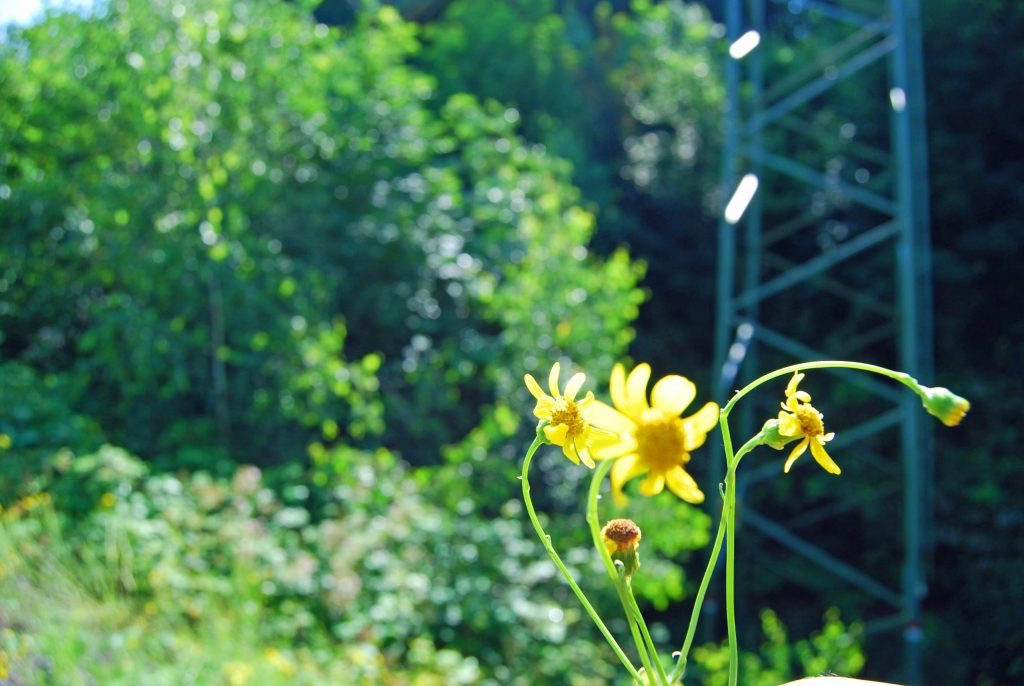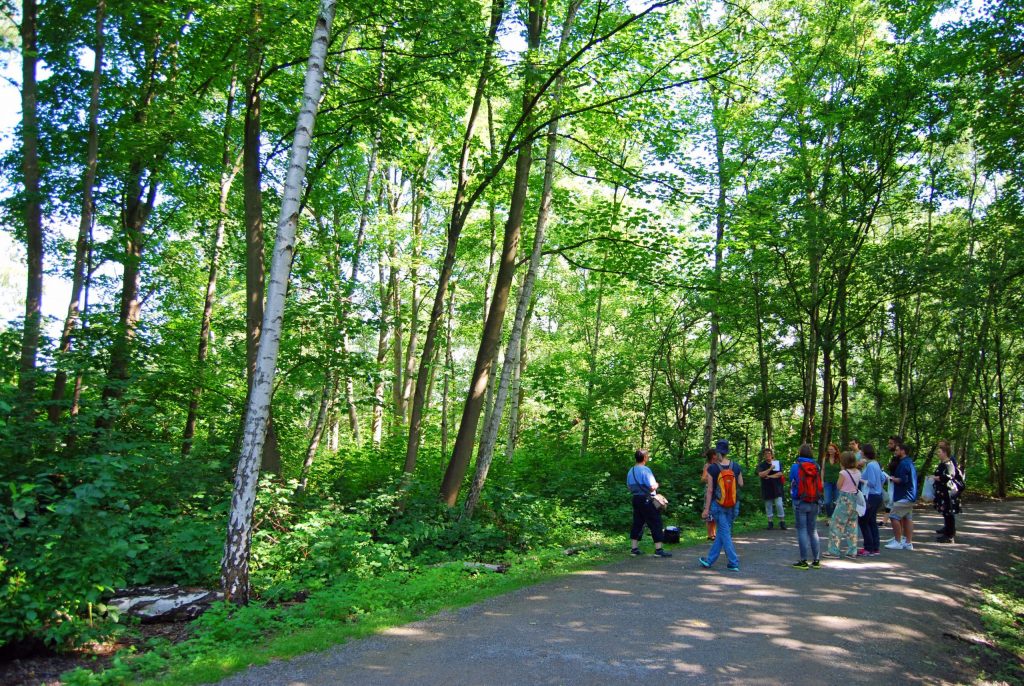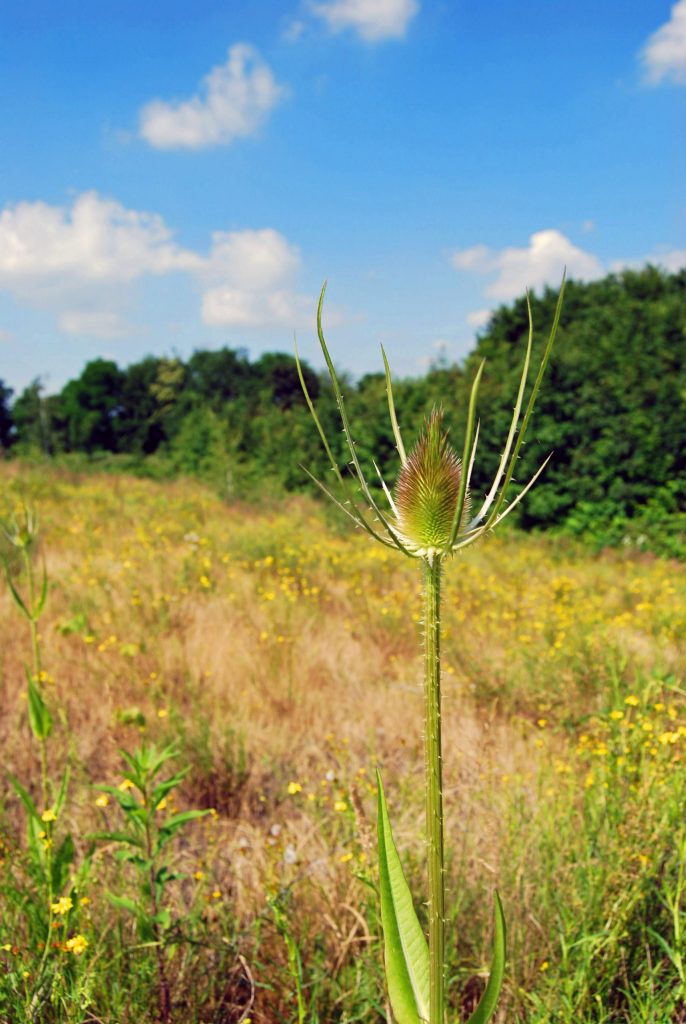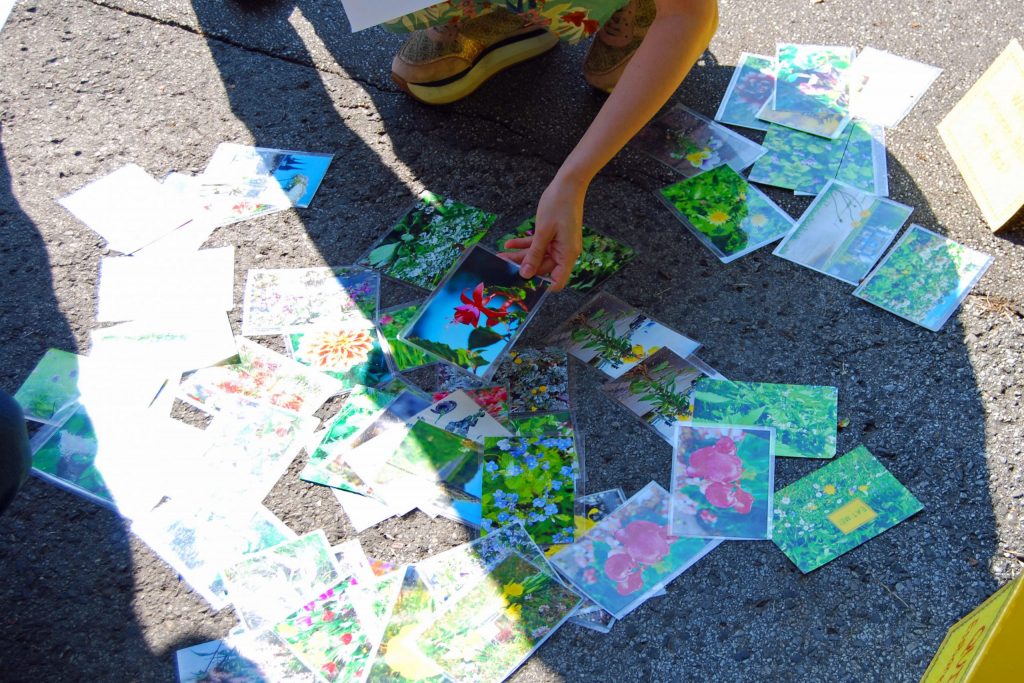Urban gardening. Rental acres. Allotment gardens. Herbal tours?
The trend of tackling green growth in the urban jungle and harvesting what one sows there is taking a steep upwards turn… as do I on this tour along the trail of Ruhr area herbs that is going to lead me up to the Halde Rheinelbe in Gelsenkirchen. I will pick my own herbs there, and even boldly try some of them. Of course, I will have someone to instruct me. After all, some things aren’t edible. It’s surprising how much is, though.
The first challenge herb expert Ursula Stratmann has for us today is putting her treasures, as she affectionately calls the plants we are about to encounter – into one of two categories based on flowers shown on laminated pictures: can we eat them, or would that be ill-advised? There’s a surprisingly low number of plants that are better left alone. Hydrangea, crocus, and daffodil flowers look pretty, but they do belong in the latter category of unpalatable greenery. The brightly purple aconite flower is the most poisonous one. This is where the theory ends.
In the practical part, we stop when we find some Japanese knotweed. It likes to spread here in our Ruhr area. We’ve all seen it before, and in particular those who like to look at what is growing around them while stuck in a traffic jam will be familiar with it. It isn’t picky and will settle anywhere it can, among other places along highways. The Halde Rheinelbe is another one of those spots, where it grows entirely undisturbed. I observe myself putting the first bit of greenery into my mouth straight from nature. A short time later, I try a spoon of knotweed fruit puree Ursula has prepared for us at home. “Tastes a bit like rhubarb,” she says. She’s certainly right.
The Japanese knotweed & the evening star
local garden
About 150 herbs live at the Halde. “There’s no need to travel for a diverse botanical experience. The Ruhr area has all the plants in the world close together,” Ursula advertises her “local garden” with a grin.
Anything that can live on little water or that digs its roots into the deep layers of the soil will grow on the Halde rock. One example is the purple viper’s bugloss. No worries: the Halde Haniel is not a site of contaminated soil. It is merely a huge mountain of unproductive rock unearthed by some 500 miners in the period from 1873 to 1928. However, the excavated stone was not quite as unproductive as they thought initially, as some residual coal, in combination with the high pressure of the rock masses, kept the dump glowing for decades. “The high temperature of 400 degrees caused the scree layers to virtually bake together in places. Once backfilling was completed, parts of the dump were covered with clay soil to stop the smouldering fire,” Ursula tells us.
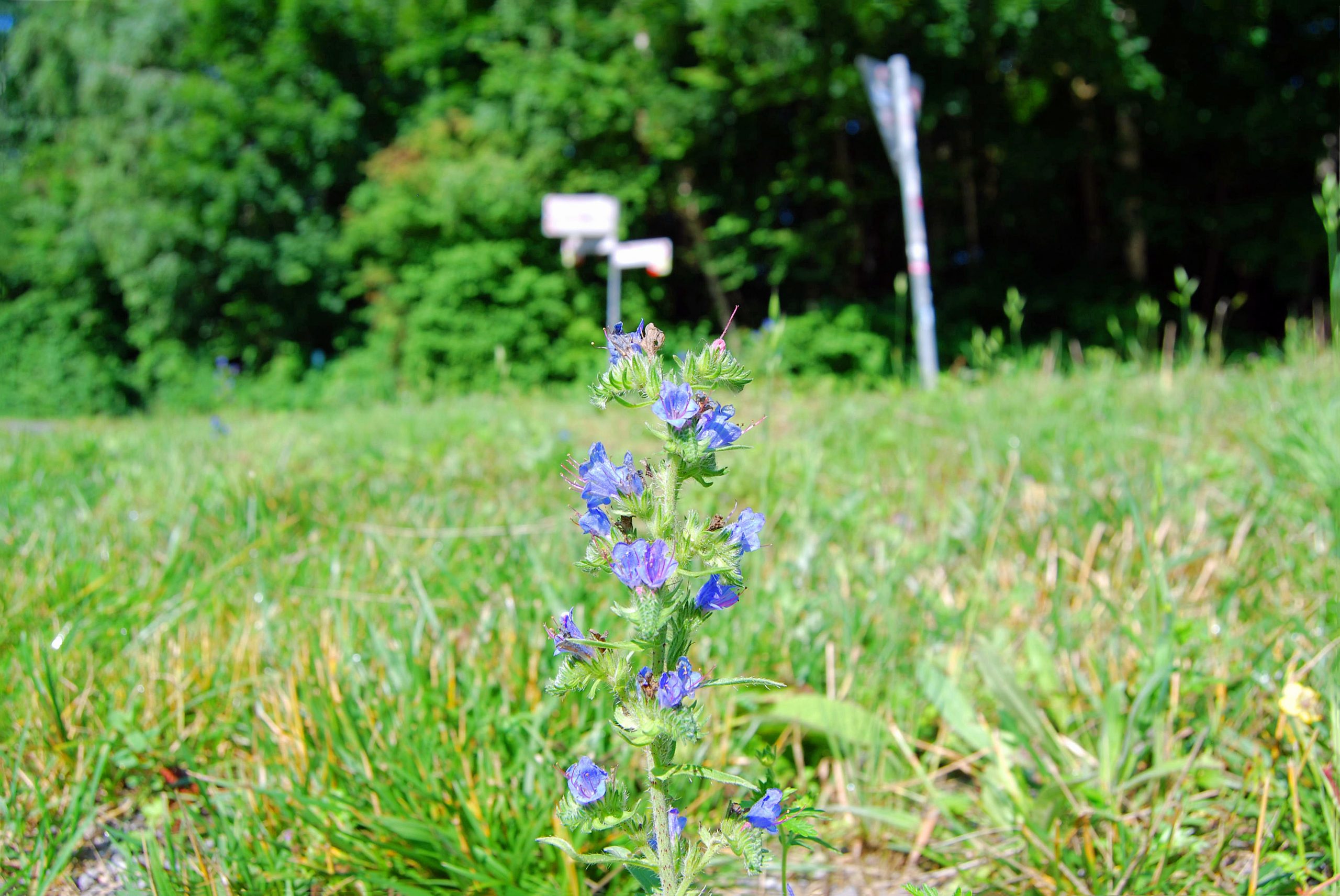
purple aconite flower
”There’s no need to travel for a diverse botanical experience. The Ruhr area has all the plants in the world close together.
Ursula Stratmannherbal expert
motorway sunshine
We happily continue to explore what nature presents us with. “Will you come look at this treasure!” We hear our tour guide call out in a high-pitched voice, and we all focus back on what grows along the path with all our senses. “Who is familiar with this motorway sunshine?”, Ursula then asks us, holding up a yellow flower. The group mutters uncertainly. Nobody really knows. Eventually, the expert rescues us: “It’s narrow-leaved ragwort. It came to Germany as a seed in sheep wool imports from South Africa back in 1880. Unsurprisingly, it loves the warm dump. Don’t eat it, though. Back home, it is used topically to cure skin ailments. Its anti-fungal and anti-bacterial effects have been scientifically confirmed.”
Ground ivy, Ursula’s favourite, is waiting for us in the Halde forest. “Three leaves a day are enough to keep you healthy.” I’m trying that right away. It tastes somewhat woodsy. “This treasure is the perfect remedy for cough and to cure festering sores. Its tea stimulates the immune system and metabolism as well as purifying the body.” We continue on our way, leaving mountain maples and birches behind us and walking out of the man-made forest as it is unique for the Ruhr area. Ursula tells us that climbing the Halde always reminds her of the Großglockner in the Alps. Just like here, it affords an opportunity of observing the different vegetation stages as they change with increasing altitude. Tree line, shrub line, then just weeds and nothing anymore above.
narrow-leaved ragwort & the forest
otherworldly
I am impressed by Ursula’s extensive plant knowledge. She knows the history, effects, and applications of every single plant. In spite of that, this Saturday morning outing feels nothing like being subjected to a botany lesson. Ursula’s passion, her sense of humour, and the way she winks at the right moment of an anecdote make sure of that. “Look at this otherworldly apparition!” she exclaims, pointing at a spiky plant as we move further up towards the Halde peak at 106 metres above sea level. “Wild cardoon is a miracle cure against aging. It tastes incredibly bitter and stimulates the immune system, metabolism, blood formation, and digestion. By the way, ‘beauty water’, which has been known since the Middle Ages, collects in its stem leaves. Help yourself if you want to grow even more beautiful,” Ursula says with a chuckle.
wild cardoon & picture puzzle
It’s virtually impossible to remember every single thing the certified biologist, certified herbalist, and environmental consultant tells us. Ursula recommends the “Flora Incognita” app that provides additional information on plants after taking a photo. However, there isn’t an app in the world that could replace a herbal tour de Ruhr with Ursula. After all, it wouldn’t pour you a herbal schnapps, hand out herbs from its own garden that its husband doesn’t want to have there anymore, or show you how to whistle on Japanese knotweed, along with a great many other things that unfortunately won’t fit in this article anymore.
Text & Photos: Britta Rübsam


